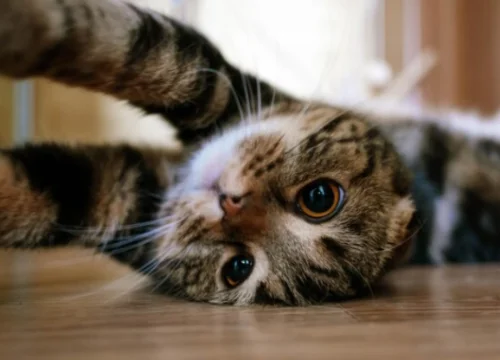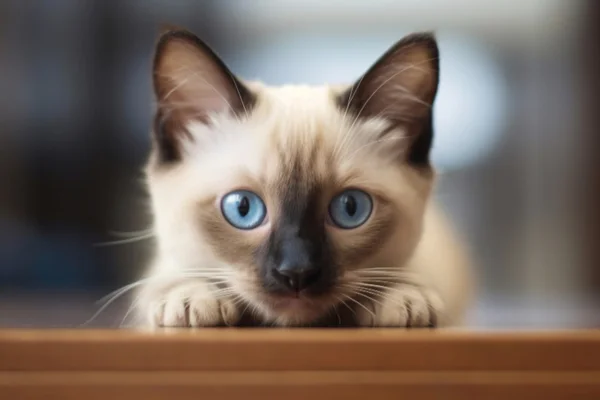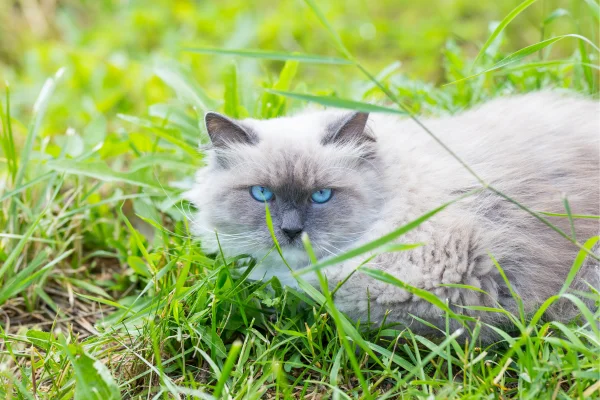Seizures in Cats: Causes, Symptoms and Treatments
Seizures in cats can be a frightening and disconcerting event for owners, often leaving them confused and worried about the well-being of their feline companions. Understanding what causes seizures, the associated symptoms and the treatment options available is crucial to help manage and hopefully alleviate seizure episodes. In this article, we'll explore everything you need to know about seizures in cats.
What Are Seizures in Cats?
Seizures in cats refer to sudden, involuntary episodes of abnormal brain activity that result in muscle contractions and uncontrolled body movements. During a seizure, the cat may exhibit tremors, muscle spasms, excessive salivation, chewing movements and loss of bladder and bowel control.
Seizures can vary in intensity and duration, from brief episodes lasting a few seconds to prolonged seizures lasting several minutes.
Contents
Causes of Seizures in Cats
There are a variety of underlying conditions that can trigger seizures in cats. Some of the most common causes include:
- EpilepsyAs in humans, epilepsy is a common cause of seizures in cats. Epilepsy is characterized by recurrent seizures without an identifiable underlying cause.
- Head trauma: Head injuries, such as those resulting from car accidents or falls, can lead to seizures in cats.
- IntoxicationExposure to toxic substances such as cleaning products, pesticides or poisonous plants can trigger seizures.
- Metabolic DiseasesMetabolic disorders such as hypoglycemia (low blood sugar), hypocalcemia (low blood calcium) and liver failure can cause seizures.
- Brain TumorsTumors in the brain can interfere with the brain's normal electrical activity and trigger seizures.
- InfectionsInfections such as toxoplasmosis, encephalitis and rabies can lead to seizures in cats.
Symptoms of Seizures in Cats
Symptoms of seizures in cats can vary from mild to severe and may include:
- Involuntary limb movements
- Excessive salivation
- Loss of consciousness
- Chewing movements
- Urinary and fecal incontinence
- Muscle stiffness
- Abnormal behavior after the seizure, such as disorientation or lethargy
It is important to carefully observe the symptoms and duration of the seizures, as this can provide valuable information to the vet during diagnosis and treatment.
Diagnosis and treatment
When a cat presents with seizures, it is crucial to seek veterinary attention immediately. The vet will carry out a full physical examination, along with a review of the cat's medical history and a discussion of the symptoms observed.
Diagnosing seizures in cats can involve a series of tests, including blood tests to assess glucose levels, calcium and liver function, imaging tests such as X-rays and computed tomography (CT) scans to detect lesions in the brain, and even a lumbar puncture to check for infections.
The treatment of seizures in cats will depend on the underlying cause. If epilepsy is diagnosed, the vet may prescribe anticonvulsant medication to help control seizure episodes. If the cause is a metabolic condition, treatment may involve correcting metabolic imbalances with specialized diet and supplementation.
In cases of poisoning, it is crucial to identify and remove the source of the toxin and provide supportive treatment, such as fluid therapy and the administration of activated charcoal to help absorb the toxic substance from the digestive system.
Prevention and ongoing care
Although not all seizures in cats can be prevented, there are some measures that owners can take to help reduce the risk:
- Keep toxic substances out of the cat's reach, including cleaning products, poisonous plants and dangerous foods.
- Avoid falls and head injuries by keeping windows closed or screened and minimizing access to high areas.
- Maintain a healthy and balanced diet to promote your cat's metabolic health.
In addition, it is important to closely monitor the cat after a seizure episode and report any changes in behavior or additional symptoms to the vet.

Post-Convulsion Management and Monitoring
After a convulsive episode, it is essential to provide your cat with a calm and quiet environment in which to recover. Avoid sudden movements or attempts to restrain the animal during the seizure, as this can cause additional injuries. Place the cat in a safe and cozy area, away from sharp or dangerous objects, and provide fresh water and light food if it is willing to eat.
Conclusion Seizures in Cats
In summary, seizures in cats can be an alarming symptom of a variety of underlying conditions. With a careful approach to diagnosis, treatment and prevention, owners can help to effectively manage seizure episodes and improve the quality of life of their feline companions. Always consult a veterinarian for individualized guidance and assistance when dealing with seizures in cats.
Thanks for stopping by, check out our other work too
https://cuidar.petlove.com.br/anti-helmintico-chemitec-chemital-para-gatos/p?sku=2344000
https://vettopbr.com/tosse-em-caes/








